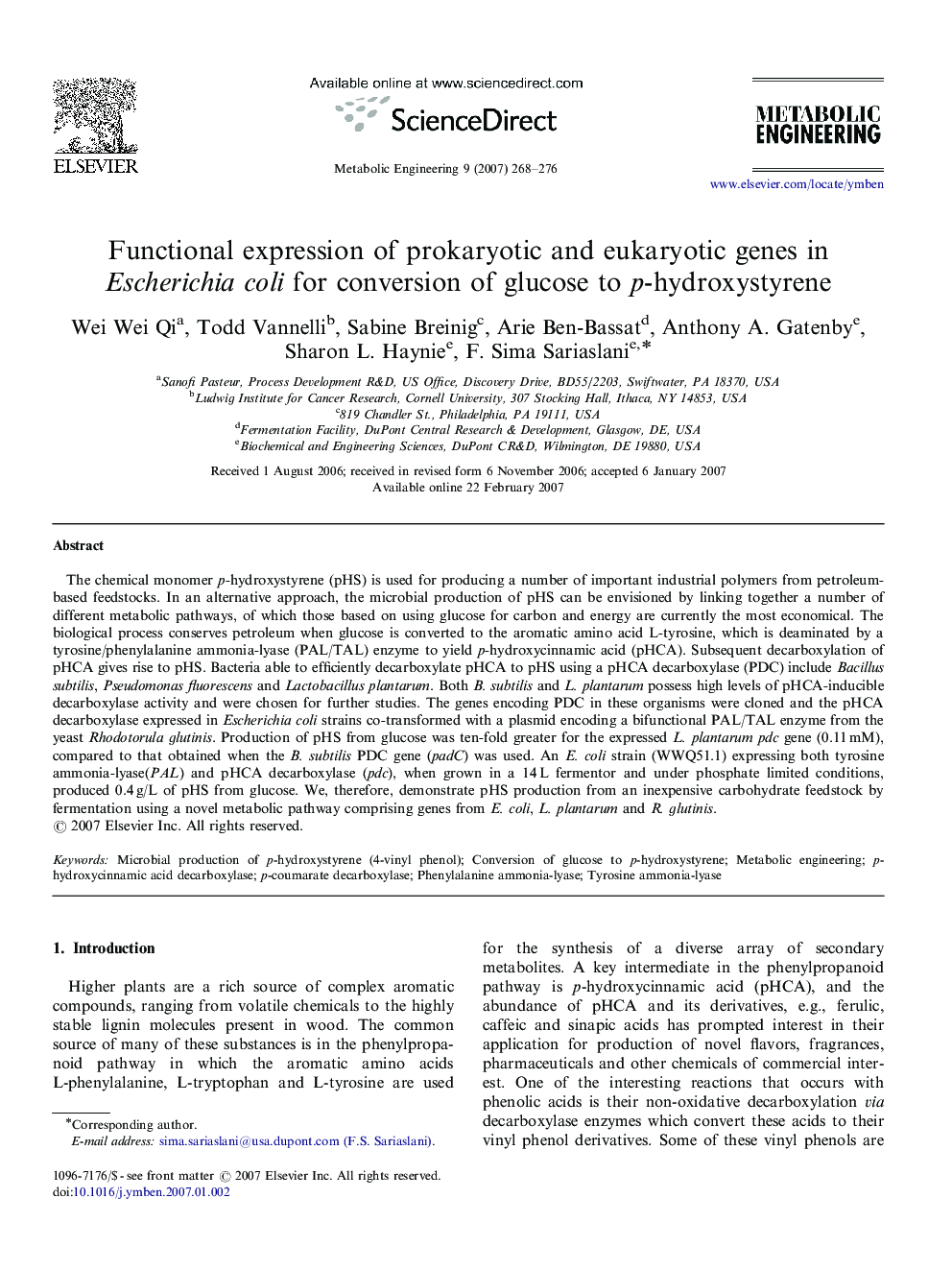| Article ID | Journal | Published Year | Pages | File Type |
|---|---|---|---|---|
| 31988 | Metabolic Engineering | 2007 | 9 Pages |
The chemical monomer pp-hydroxystyrene (pHS) is used for producing a number of important industrial polymers from petroleum-based feedstocks. In an alternative approach, the microbial production of pHS can be envisioned by linking together a number of different metabolic pathways, of which those based on using glucose for carbon and energy are currently the most economical. The biological process conserves petroleum when glucose is converted to the aromatic amino acid L-tyrosine, which is deaminated by a tyrosine/phenylalanine ammonia-lyase (PAL/TAL) enzyme to yield pp-hydroxycinnamic acid (pHCA). Subsequent decarboxylation of pHCA gives rise to pHS. Bacteria able to efficiently decarboxylate pHCA to pHS using a pHCA decarboxylase (PDC) include Bacillus subtilis, Pseudomonas fluorescens and Lactobacillus plantarum. Both B. subtilis and L. plantarum possess high levels of pHCA-inducible decarboxylase activity and were chosen for further studies. The genes encoding PDC in these organisms were cloned and the pHCA decarboxylase expressed in Escherichia coli strains co-transformed with a plasmid encoding a bifunctional PAL/TAL enzyme from the yeast Rhodotorula glutinis. Production of pHS from glucose was ten-fold greater for the expressed L. plantarum pdc gene (0.11 mM), compared to that obtained when the B. subtilis PDC gene (padC) was used. An E. coli strain (WWQ51.1) expressing both tyrosine ammonia-lyase(PAL) and pHCA decarboxylase (pdc), when grown in a 14 L fermentor and under phosphate limited conditions, produced 0.4 g/L of pHS from glucose. We, therefore, demonstrate pHS production from an inexpensive carbohydrate feedstock by fermentation using a novel metabolic pathway comprising genes from E. coli, L. plantarum and R. glutinis.
